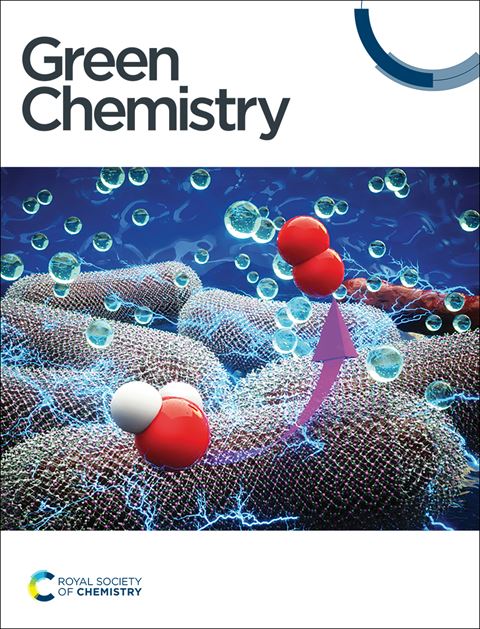Tandem Diels–Alder reaction overrules entropy: the gate to thermally stable, yet thermally recyclable furan-based polymers†
IF 9.3
1区 化学
Q1 CHEMISTRY, MULTIDISCIPLINARY
引用次数: 0
Abstract
The study investigates the kinetics and thermodynamics of the reversible tandem Diels–Alder (tDA) reaction between difuranic compounds and maleimides, leading to the quantitative formation of tDA adducts at rates comparable to their counterparts from the “classical” Diels–Alder (DA) reaction. The tDA adducts exhibited unprecedented thermal stability up to 250 °C, which is 100 °C higher than that of the DA adducts, owing to the higher activation energy (Ea) required for the initial intramolecular step of the reverse process. The stability of the tDA adducts was exploited in the AA + BB type polymerization of tetrafuranic monomers with bis(maleimides), yielding thermally stable (up to 200 °C) yet depolymerasable linear polymers with molecular weights of 10–20 kDa. Only furanic groups were identified as the end-groups of the resulting polymers, suggesting the possibility for post-polymerization and end-group modifications. NMR and GPC kinetic data offered insights into the intermediate formation of classical adducts during polymerization, as well as the stereochemistry of tDA adducts in the polymer chains. Combined thermal analysis (DSC, TGA, and TMA) provided a comprehensive understanding of the reverse DA reaction in the resulting materials. This relatively clean, catalyst- and byproduct-free, well-controlled process, which uses derivatives of biorenewables as monomers, heralds the formation of a new class of thermally recyclable polymers.

求助全文
约1分钟内获得全文
求助全文
来源期刊

Green Chemistry
化学-化学综合
CiteScore
16.10
自引率
7.10%
发文量
677
审稿时长
1.4 months
期刊介绍:
Green Chemistry is a journal that provides a unique forum for the publication of innovative research on the development of alternative green and sustainable technologies. The scope of Green Chemistry is based on the definition proposed by Anastas and Warner (Green Chemistry: Theory and Practice, P T Anastas and J C Warner, Oxford University Press, Oxford, 1998), which defines green chemistry as the utilisation of a set of principles that reduces or eliminates the use or generation of hazardous substances in the design, manufacture and application of chemical products. Green Chemistry aims to reduce the environmental impact of the chemical enterprise by developing a technology base that is inherently non-toxic to living things and the environment. The journal welcomes submissions on all aspects of research relating to this endeavor and publishes original and significant cutting-edge research that is likely to be of wide general appeal. For a work to be published, it must present a significant advance in green chemistry, including a comparison with existing methods and a demonstration of advantages over those methods.
 求助内容:
求助内容: 应助结果提醒方式:
应助结果提醒方式:


